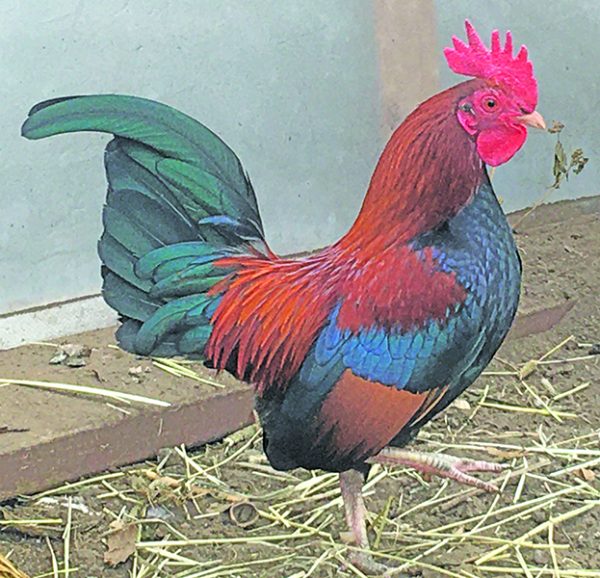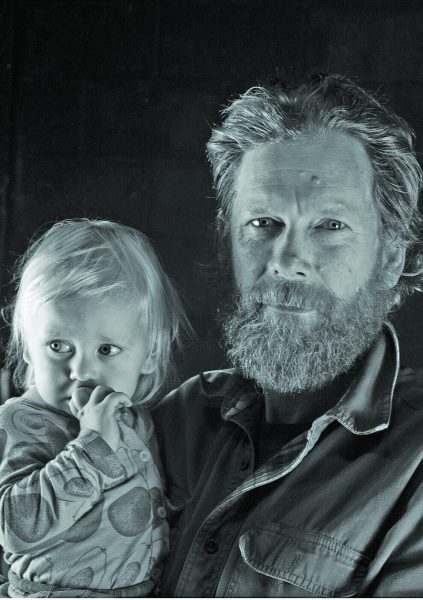For the love of flannel
Kaitlyn Townsend, Seth Whitaker, Shavonna Bent, Andrew Lotto, Ben Simone, and Kaleb Gabree
What do big lumberjacks, mountain men, hipsters, and Johnson State College students all have in common? Their love of flannel, of course.
Just take a walk across the quad, or duck into a few classrooms, and you will find plenty of students wearing flannel shirts made of thick wool or cotton fabric with a plaid print. Flannel, which has a rich history world-wide, has become part of the culture in Vermont and at JSC.
Living in the Northeast is a main reason students will grab a flannel when getting dressed in the morning. Corrina Skorker, who goes back and forth between hoodies and flannels because of their warmth, also thinks students choose flannels for their style.
“Students wear flannel because it’s not only stylish, but can basically be matched with anything,” said Skorker.
Flannel dates back to 16th century Scotland when wool became more abundant. Scottish kilts were made out of wool, and according to Wikipedia were called “belted plaid,” because each strip of cloth was about 7 yards long and needed to be belted up in order to stay on.
In Wales around the same time, wool replaced some cotton fabrics in a process called carding. Carding, in which wool fibers are broken apart and laid parallel, is how flannel shirts get their unique look of line by line fabric. Being warm and cheap, this fabric’s popularity grew during the industrial revolution.
Flannel made its way to America thanks to the founder of Carhartt, Hamilton Carhartt. In the late 19th century, when railroads were expanding and workdays were stretched out, Carhartt produced warm outdoor clothes for working Americans. His fabric of choice was flannel. Flannel was previously used in the Civil War for soldiers’ uniforms, but Carhartt made flannel shirts durable for any working man.
The fabric was used again in World War II as undershirts to keep soldiers warm. The fabric then transitioned to more everyday uses like bed sheets and men’s suits.
Since World War II flannel has been a popular clothing choice nationwide, and has been picked up in the fashion industry by companies from trendy brands Ralph Lauren to the ever-utilitarian L.L. Bean.
Not many clothing articles are as diverse as the flannel shirt. High schoolers wear them, college students live in them, and the older generations work in them. Flannel shirts are also very gender neutral. Rugged men or nerdy boys can wear flannel and both look stylish. On the female side, women can wear the shirts with leggings, or with Carhartts and be ready to take on the coldest of days.
“Flannel creates an easy and good-looking outfit as well as being comfy and warm in the cold weather. It also can work well as just a jacket when it’s not negative out,” said Alyssa August, who can be seen around campus wearing an oversized flannel and leggings on any given day.
Vermont is known for many things, ice cream and maple syrup included, but flannel is another article to add to that list.
“There are a lot of people who visit Vermont who want to buy a Vermont flannel, because it is that ever-lasting Vermont souvenir,” said Serena Baker, manager at the Vermont Flannel Company. “Flannel in Vermont has never gone out of style. In some places it’s a trend that is re-surging, but it’s always been a staple of Vermont life.”
“Flannel does represent Vermont in a way,” said Nichole Weeks, who owns shirts, blankets, and pants from the Vermont Flannel Company. “Moving from Florida to Vermont, I noticed right away it was a trend, and I have only seen this in Vermont. It’s not like it’s a trend of a certain kind of person, but more a state-wide common clothing.”
Flannel shirts may not be about personal expression through fashion, but instead a practical clothing option to express the state JSC students live in. “They’re a comfortable, semi-warm layer to throw on,” said Brendan Walsh, who is known for the classic t-shirt and flannel combination.
Flannel is not just popular in rural Vermont, and in fact it was highlighted in ELLE online as a 2015 fall fashion trend, as well as Seventeen Magazine. Flannel is seen as a hip trend across the country, but in Vermont it reminds people of hard-working citizens who need to be kept warm, just as Hamilton Carhartt intended it to be.
“It represents Vermont because it captures that perfect mountain man appearance,” said Andrew Lotto, who wears flannel almost every day.
Vermont’s obsession with flannel is not only in line with fashionistas around the world, but in touch with the true heritage of the state. At JSC, with such a variety of people on campus and commuters, students are almost navigating through a sea of flannel.
Students may choose flannel from their closet because of mainstream fashion, warmth, comfort, or a desire to feel like a true Vermonter, but whatever the reason, they are not alone in loving flannel.










